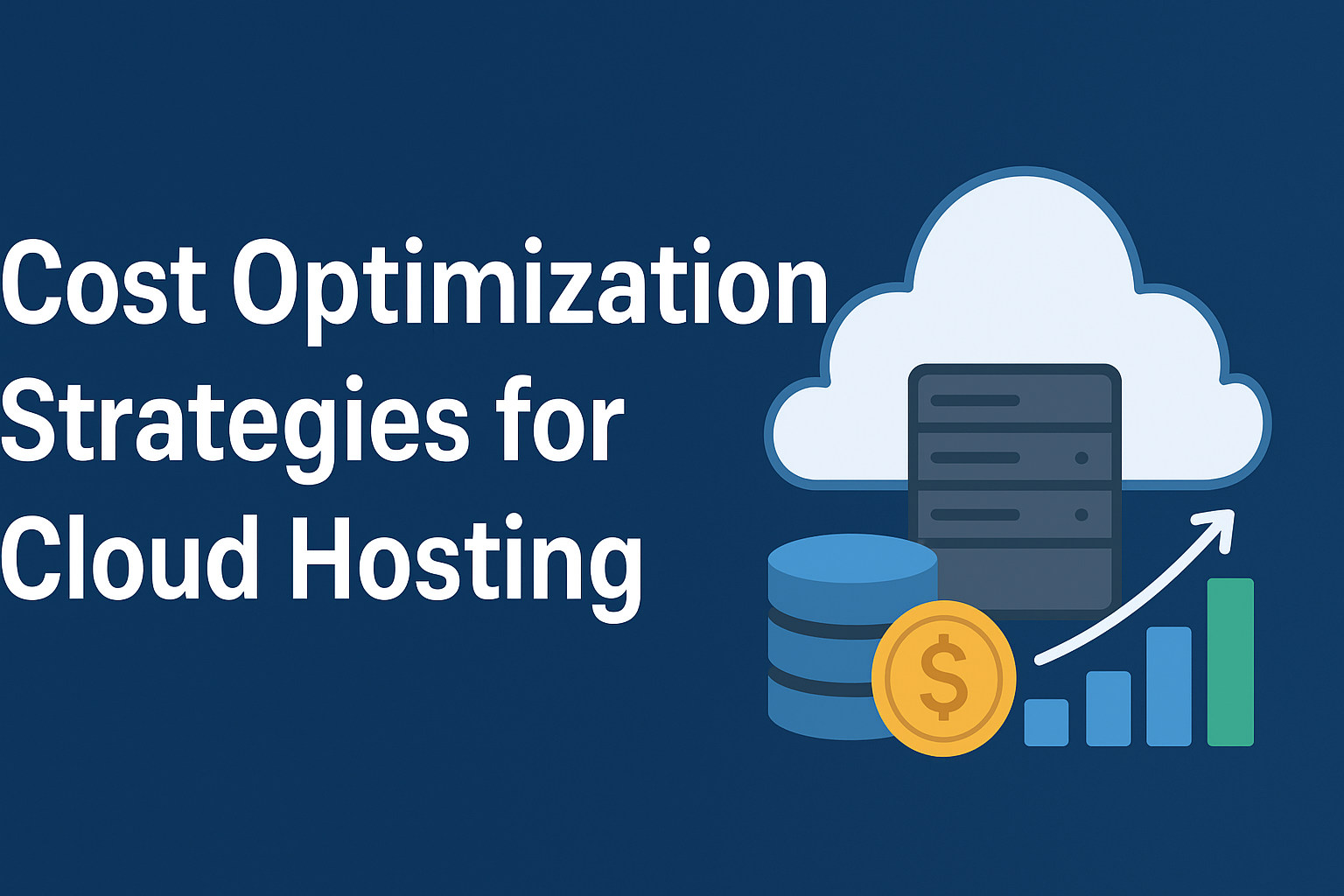Cost Optimization Strategies for Cloud Hosting
Cloud hosting has transformed the way businesses manage and scale their IT infrastructure. However, as organizations grow, so can their expenses. Without proper oversight, monthly bills can quickly spiral out of control. By applying effective cost optimization strategies for cloud hosting, companies can control spending while maintaining performance and reliability.
1️⃣ Rightsize Your Resources
One of the easiest ways to optimize cloud costs is to evaluate whether your resources match your workloads. Many businesses over-provision servers, storage, or bandwidth “just in case,” leading to unnecessary charges.
-
Conduct regular audits of CPU, memory, and storage usage.
-
Downsize or eliminate underutilized instances.
-
Use auto-scaling to adjust capacity dynamically based on demand.
2️⃣ Leverage Reserved and Spot Instances
Cloud providers like AWS, Azure, and Google Cloud offer Reserved Instances for predictable workloads at a lower cost than on-demand pricing. For short-term or flexible tasks, Spot Instances can deliver massive savings—sometimes up to 80%. Combining these purchasing models reduces expenses without sacrificing availability.
3️⃣ Implement Storage Lifecycle Policies
Data storage can quickly become one of the largest components of your cloud bill. To optimize costs:
-
Use tiered storage, moving infrequently accessed files to low-cost archival tiers.
-
Set up automatic lifecycle policies to delete or archive unused data.
-
Compress files and implement deduplication to save space.
4️⃣ Monitor and Analyze Cloud Usage
Visibility is key to controlling cloud expenses. Enable detailed billing reports and integrate cost-management tools like AWS Cost Explorer, Azure Cost Management, or third-party platforms. By reviewing reports regularly, you can detect spending anomalies early and take corrective action.
5️⃣ Automate Scaling and Scheduling
Not every application needs to run 24/7. By scheduling non-critical workloads to shut down during off-hours, you avoid paying for idle resources. Combine this with auto-scaling policies to ensure that systems only consume resources when needed.
6️⃣ Optimize Network and Bandwidth Costs
Data transfer fees can add up quickly, especially in multi-region setups. To reduce expenses:
-
Consolidate resources within the same region.
-
Use Content Delivery Networks (CDNs) to minimize outbound traffic.
-
Monitor bandwidth usage to identify and address inefficiencies.
7️⃣ Adopt FinOps Practices
FinOps, or Cloud Financial Operations, is a cultural and operational framework that combines finance, technology, and business teams to manage cloud spending effectively. By fostering accountability, setting budgets, and creating cost-awareness, FinOps helps organizations align cloud investments with business goals.
Conclusion
Optimizing cloud hosting costs is not a one-time effort but an ongoing process. By rightsizing resources, using Reserved and Spot Instances, automating workloads, and embracing FinOps, businesses can unlock significant savings without compromising on performance. Start implementing these cost optimization strategies for cloud hosting today to maximize your return on investment.






